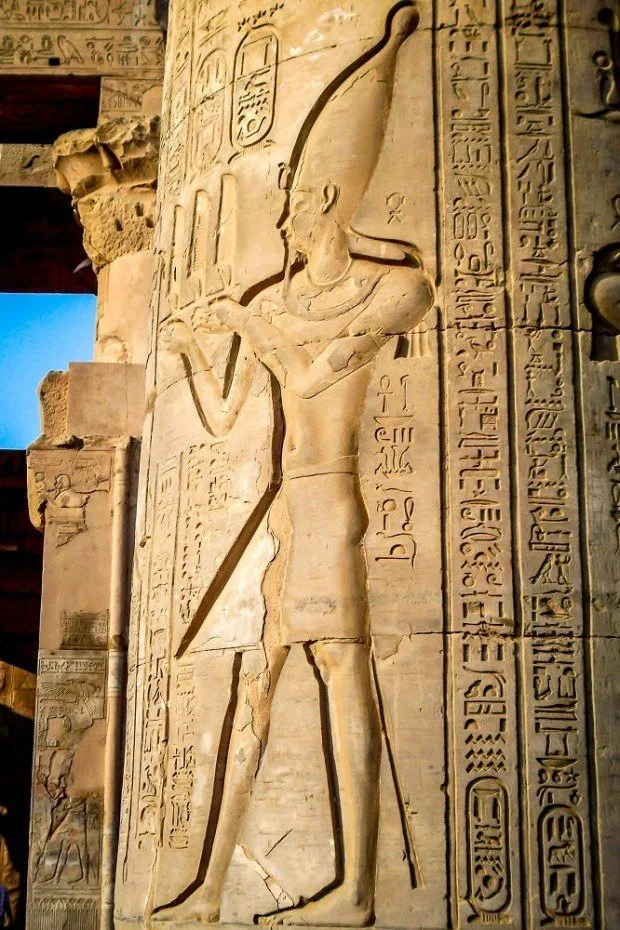Of all the Egyptian Pharaonic temples, none has a more impressive setting than the Kom Ombo Temple. Located literally on the bank of the Nile River, you feel like you can practically touch the massive stone pillars from your cruise boat on the water.
We came to the Temple of Kom Ombo as most travelers do — on a Nile River cruise. The sailing from Aswan to Kom Ombo takes a few hours and most cruises try to time their arrival for around sunset because the monument throws off a spectacular deep red color. The river cruise boat drops you at a dock right at the temple itself. It makes for a very impressive arrival!
This temple from the Ptolemaic times (built in the 2nd century BC) is the only temple in Egypt built to honor two gods — both the crocodile god Sobek and the god Haroeris (Horus the Elder). This unusual double temple is much more striking in person and has been recognized as a UNESCO World Heritage Site.
The most impressive thing about the dual temples were the relief in the carvings on the walls. They were not simply carved into the rock, but they were completed so that the sharp details stood up out of the rock vividly.
In some places, you could even see a glimpse of the amazingly deep colors that would have covered the temple thousands of years ago. Yes, you heard that right. Some of the original colors still remain.
We spent about an hour walking around as the light and shadows from the sunset played on the colors of the stones and ancient reliefs. Some of them left us absolutely in awe.
Before this trip, we had never heard of Kom Ombo. We had prioritized seeing other temples, like Abu Simbel. However, this one surprised us and we would certainly recommend visiting if you have the opportunity.
Finally, we recommend visitors to the temple take some time in Aswan and visit the Nubian Museum before boarding their Nile cruise. This is an excellent museum — well organized, not too big, with well-written descriptions in English. This museum is everything the Egyptian Museum in Cairo could be. Best of all, it helps put the Kom Ombo Temple into a kind of context that is lacking at the temple itself.
Lance Longwell is a travel writer and photographer who has published Travel Addicts since 2008, making it one of the oldest travel blogs. He is a life-long traveler, having visited all 50 of the United States by the time he graduated high school. Lance has continued his adventures by visiting 70 countries on 5 continents – all in search of the world’s perfect sausage. He’s a passionate foodie and enjoys hot springs and cultural oddities. When he’s not traveling (or writing about travel), you’ll find him photographing his hometown of Philadelphia.






